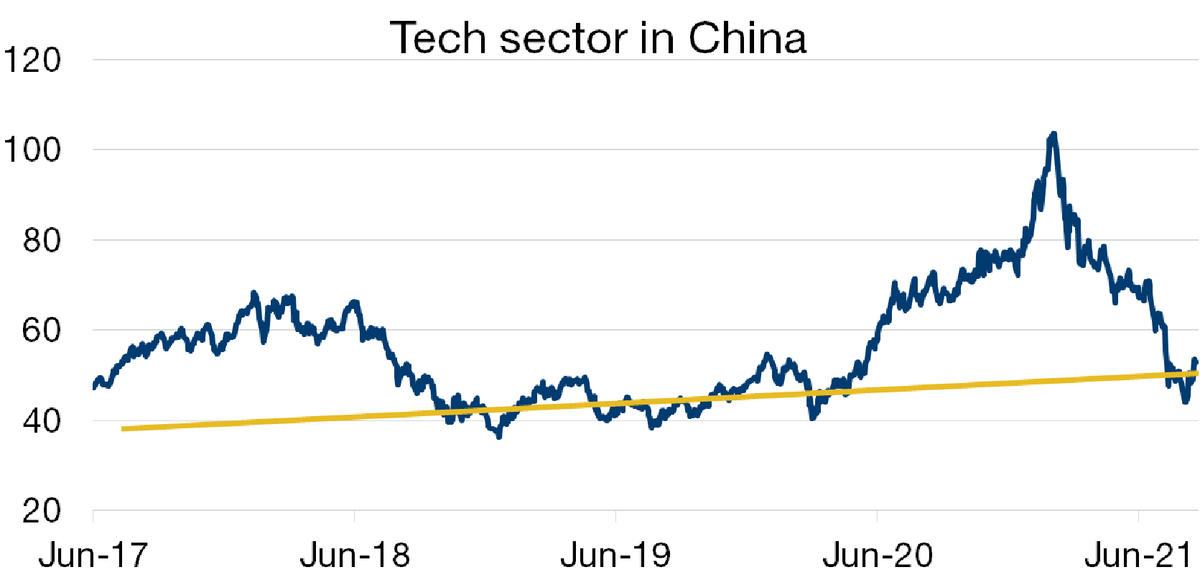06/09/2021
Flash boursier
Key data
| USD/CHF | EUR/CHF | SMI | EURO STOXX 50 | DAX 30 | CAC 40 | FTSE 100 | S&P 500 | NASDAQ | NIKKEI | MSCI Emerging Markets | |
| Latest | 0.91 | 1.09 | 12'351.84 | 4'201.98 | 15'781.20 | 6'689.99 | 7'138.35 | 4'535.43 | 15'363.52 | 29'128.11 | 1'315.91 |
| Trend | |||||||||||
| YTD | 3.24% | 0.40% | 15.40% | 18.28% | 15.03% | 20.51% | 10.49% | 20.75% | 19.21% | 6.14% | 1.91% |
(values from the Friday preceding publication)
Growth falters as autumn approaches
Last week investors waited with bated breath for US job figures, released on Friday. Currently, equity indices are hovering around record highs, powered ahead by unconditional support from central banks. For instance, the S&P 500 is riding on its seventh consecutive month of gains. But it looks like economic growth has peaked. The pace is set to slow this autumn as consumer spending wilts in the face of delta-related fears.
In the US, the latest employment report yielded job creation well below expectations, with 235,000 jobs added compared with the 750,000 expected. This shows the jobs recovery slowing sharply amid labour shortages and dwindling demand in the services sector linked to resumption of the pandemic. Most of the occupations that are supposedly the focal point of the jobs rush stemming from the reopening of the economy are at a standstill. The leisure and hotel sectors did not create any jobs at all.
Jerome Powell last week left the door open to tapering (i.e. reductions in asset purchase flows) between now and the end of the year. Yet the Fed chief was also careful to point out that a reduction in asset purchases would not mean that the rate lift-off is around the corner. Now the Fed will have to contend with both the labour market slowdown and converging inflation signals, including the stronger-than-expected rise in wages. The average hourly wage has risen by 0.6% month-on-month and 4.3% year-on-year.
Angst about tapering news will intensify in the run-up to the next Federal Reserve meeting on 22 September.
In Europe, private-sector business activity remained strong in August, suggesting that the euro area could revert to its pre-pandemic track by the end of the year. Christine Lagarde has also started a communication campaign to prepare investors for a gradual reduction in the ECB’s monetary support. The European Central Bank will meet on 8 and 9 September and could even then announce a curtailment of its pandemic emergency purchase programme (PEPP). But this is unlikely to mark the end of asset purchases, as its scheme focusing on public debt remains in place and is expected to feature prominently between now and March 2022. Hence the transition should be smooth.
Chinese tech priced attractively
The Chinese government has repeatedly intervened to bring tech giants and Chinese companies active in other sectors of the economy to heel. In addition to the tech sector, companies offering private educational support, online games for children and property companies have also faced harsher treatment, to varying degrees.
Common to these admonitions from the central government, at times involving draconian measures, is the notion that such companies have grown too fast and are now at odds with the government’s own long-term development goals, endangering the state by allowing property bubbles to form, creating too great a disparity in wealth and threatening a loss of state control over the colossal amounts of data accumulated by these tech companies. Other factors include inequal opportunities in the country’s education system and slowing birth rates. All of this has given the government valid reasons for rectifying abuses and reducing the risks of long-term pressure points forming. The message is clear: companies may make a fortune, but this can never be in contradiction to the strategic objectives of social stability or the continued sovereignty of the Chinese state.
The market has been knocked off balance by these moves, stoking fears among investors – many of whom have sold up their Chinese positions. Nevertheless, calm will be restored and fundamentals will always prevail, eventually. China’s tech champions are positioned in the world’s largest market by population, offer advanced technology and enjoy significant growth prospects, in contrast to their declining share prices. Current multiples suggest that now is a good time for taking long positions.


 Flash boursier
Flash boursier
